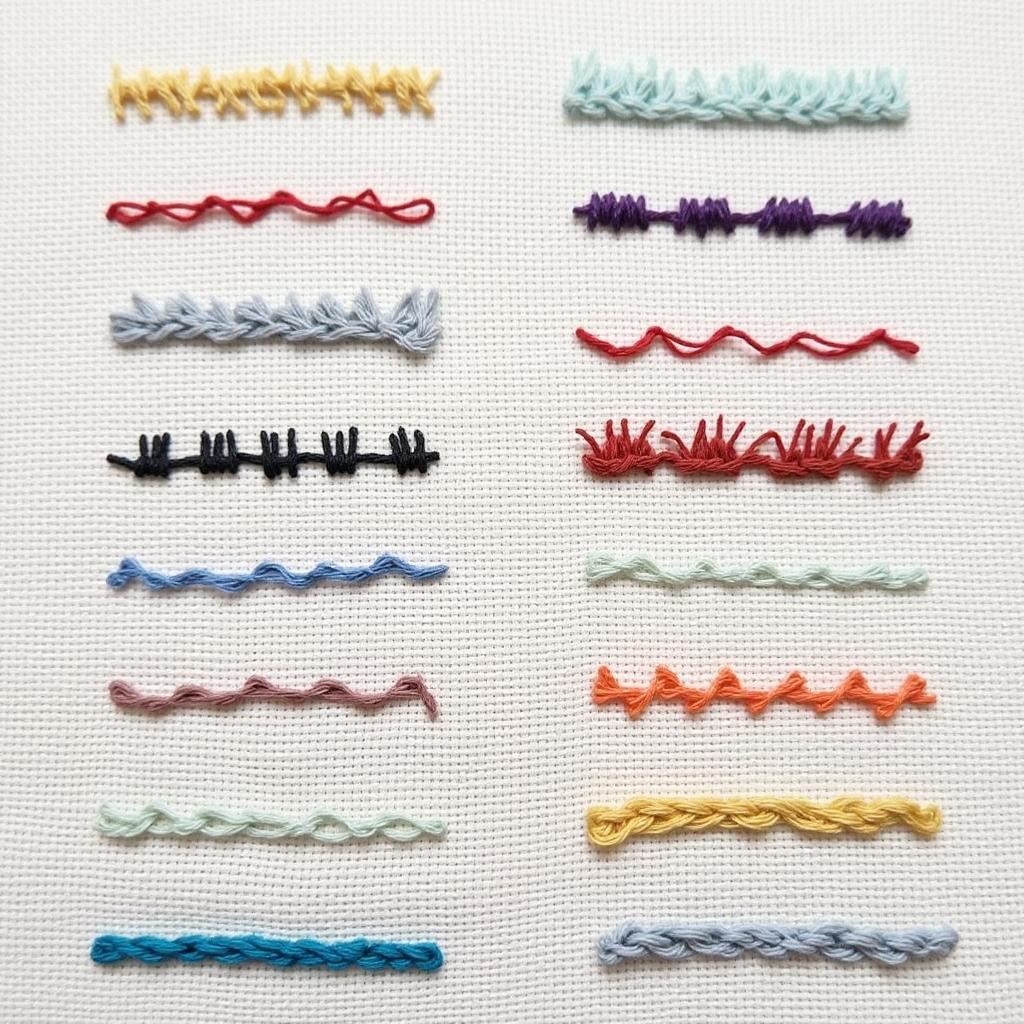Background Stitches: Understanding the Art of Backstitching in Embroidery
October 20, 2024Embroidery, a timeless craft, uses needle and thread to create intricate designs on fabric. Among its many stitches, the background stitch stands out as a versatile technique that adds depth and texture to any embroidery project. Whether you’re a seasoned stitcher or just starting out, mastering Background Stitches can elevate your embroidery game.
What Exactly Are Background Stitches?
In essence, background stitches are used to fill in the main design areas in embroidery, providing a foundation for the more elaborate stitches that come later. Unlike outline stitches, which define the edges of a design, background stitches add a layer of richness and dimension. Imagine them as the unsung heroes of embroidery, quietly working behind the scenes to make the main elements shine.
 Different Background Stitch Variations
Different Background Stitch Variations
The Importance of Background Stitches in Embroidery
While often overlooked, background stitches play a crucial role in the final outcome of your embroidery piece:
- Adding Depth and Texture: By using different background stitches, you can create a range of effects, from smooth and subtle to textured and eye-catching.
- Enhancing the Design: A well-chosen background stitch can make your main design elements pop, adding contrast and visual interest.
- Creating a Unified Look: Background stitches help tie the different elements of your embroidery together, creating a cohesive and polished finish.
Popular Types of Background Stitches
The world of background stitches is diverse and exciting. Here are a few popular choices:
-
Satin Stitch: This classic stitch creates a smooth, satin-like finish, perfect for filling in small areas and creating bold blocks of color.
-
Long and Short Stitch: As the name suggests, this stitch involves alternating between long and short stitches to create subtle shading and gradations of color.
-
Seed Stitch: This versatile stitch, worked in a scattered or random pattern, produces a textured effect that resembles scattered seeds, hence the name.
-
Brick Stitch: Resembling a brick wall, this stitch is ideal for geometric designs and creating a sense of structure.
Choosing the Right Background Stitch
The type of background stitch you choose depends largely on your design and personal preference. Consider the following factors:
-
Size and Shape of the Area: Smaller areas might benefit from a dense stitch like the satin stitch, while larger areas might call for a more open stitch like the seed stitch.
-
Desired Texture: Do you want a smooth, flat finish, or something with more texture and dimension?
-
Overall Style of the Embroidery: Choose a background stitch that complements the style of your design, whether it’s modern, traditional, or something in between.
Tips for Successful Backstitching
Mastering background stitches takes practice, but these tips can help you along the way:
-
Use the Right Needle: Choose a needle that’s the right size for your fabric and thread.
-
Maintain Consistent Tension: Keep your tension even throughout to avoid puckering or loose stitches.
-
Practice Makes Perfect: Don’t be afraid to experiment with different stitches and techniques to find what works best for you.
Conclusion
Background stitches are essential for adding depth, texture, and a polished look to your embroidery projects. Whether you’re a beginner or a seasoned stitcher, exploring the world of background stitches can open up a world of creative possibilities. So grab your needle and thread and start experimenting!
FAQs about Background Stitches
1. What is the difference between a running stitch and a back stitch?
A running stitch is a basic stitch that goes up and down through the fabric, while a back stitch goes one step back on the underside of the fabric, creating a solid line on the front.
2. What is the easiest background stitch?
The seed stitch is considered one of the easiest background stitches, as it doesn’t require perfect spacing or alignment.
3. Can I use a sewing machine for background stitching?
While some sewing machines have embroidery capabilities, hand embroidery offers more control and precision for background stitching.
Do you need support? Please contact us at Phone Number: 0915117113, Email: [email protected] Or visit our address: To 3 Kp Binh An, Phu Thuong, Viet Nam, Binh Phuoc 830000, Vietnam. We have a 24/7 customer support team.